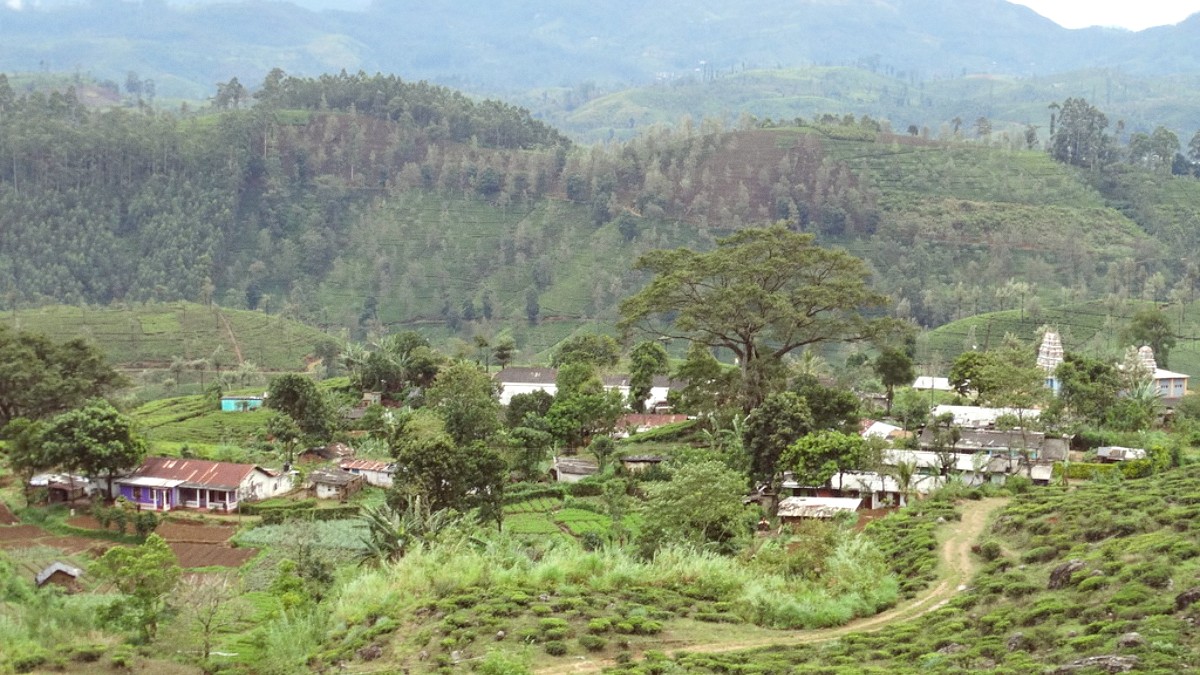
The Hill Country, Sri Lanka
Nine Arch Bridge: A masterpiece of colonial-era railway construction. Builders constructed it entirely of bricks, rocks, and cement, without steel, during the British colonial period. It is a testament to engineering ingenuity and the beauty of the railway line that winds through the hill country.
Little Adam's Peak: Named for its resemblance to the sacred Adam's Peak, this is a relatively easy hike with panoramic 360-degree views of Ella Gap, Ella Rock, and surrounding tea plantations. It is an accessible viewpoint for stunning vistas.
Check current train schedules (ask locals or your guesthouse) to time your visit with a train passing for the best photographic opportunity.
Represents colonial engineering, built without steel.
Linked to the legend of King Ravana from the Hindu epic Ramayana.
Mainly modern guesthouses and shops, no major historical districts.
They give insight into Sri Lanka's colonial tea industry heritage and processes.
None directly in Ella. Major sites are in the Cultural Triangle to the north.
Ella's appeal lies mainly in its natural beauty and outdoor activities, not in formal museums.
Ella has no major museums or cultural institutions in the traditional sense.
Nearby tea factories often have small museums or exhibition areas, detailing the history of tea production.
Very limited art galleries or exhibition spaces. No formal cultural centers or performance venues. For traditional performances, Kandy is the main destination.
None directly in Ella. Sri Lanka's main archaeological sites, like Sigiriya, Polonnaruwa, and Anuradhapura, are in the Cultural Triangle, several hours' drive north.
Ravana Cave Temple (near Ravana Falls) connected to legend. Several small Buddhist temples and Hindu kovils exist, serving the local community. Visitors can respectfully observe local religious practices.
Tea Factories: Dambatenne Tea Factory (near Haputale) or Halpewatte Tea Factory (near Ella) give insight into Sri Lanka's colonial tea industry heritage.
Ella's charm is in its natural landscape and outdoor activities, not in formal museum institutions.
Ella's architecture mainly consists of modern guesthouses and shops. The Nine Arch Bridge is the most significant historical architectural landmark.
Small Buddhist temples and Hindu kovils serve the local community. Ravana Cave Temple has a connection to the Ravana legend.
While Ella not ancient ruins, it has sites connected to its colonial past and local legends.
Ella is a hub for natural beauty, defined by its mountains, valleys, and waterfalls.
Ella is amidst lush tea plantations and forests, effectively a natural park. No formal botanical gardens exist in Ella itself.
Ella Gap, Mini Adam's Peak, and Ella Rock provide panoramic views of surrounding mountains and valleys.
While Ella itself does not have major wildlife safaris, day trips to Udawalawe or Yala National Parks for elephant and leopard sightings are popular. Birdwatching is possible locally.
The mountainous terrain, deep valleys like Ella Gap, and prominent rock formations like Ella Rock are the main geological features defining the area's landscape.
No beaches or large lakes directly in Ella. Ravana Falls is the main waterway attraction. Several smaller streams and cascades flow through the area.
Beyond the popular spots, Ella and its surroundings have lesser-known treasures.
Capture unique perspectives of Ella's beauty.
Consider nearby Haputale for a quieter alternative. Explore smaller tea estates away from main tourist routes.
For bookings, GetYourGuide is a good resource for tours and activities.
A viewpoint near Haputale with expansive and stunning views, where Sir Thomas Lipton surveyed his tea estates.
Sri Lanka's second-highest waterfall. It has opportunities for swimming in natural pools at various levels.
A serene Benedictine monastery near Haputale, originally a colonial British planter's bungalow with beautiful architecture.